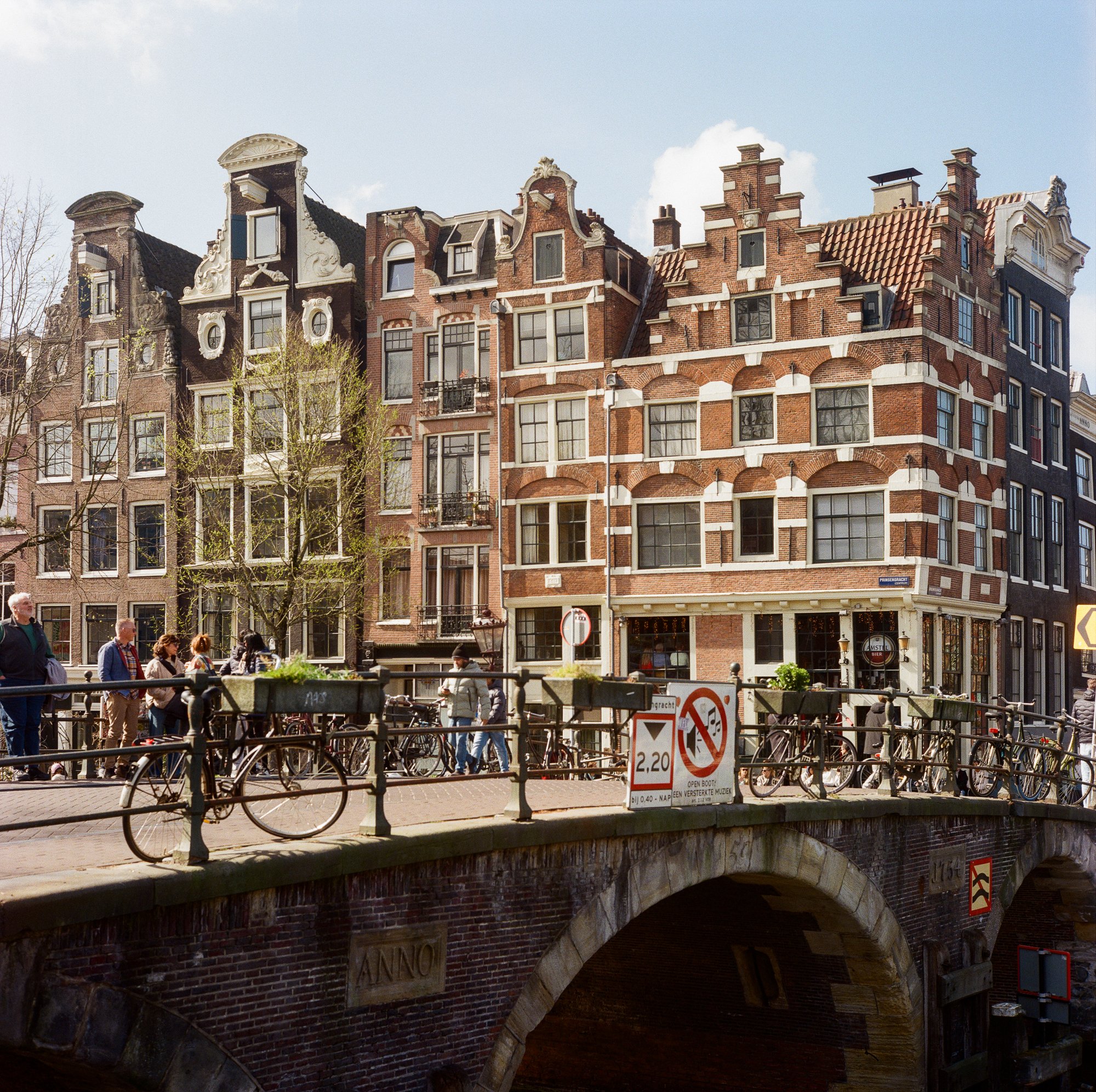Film Review: Lomography Lomo 400 in Medium Format
After completing my 12-month Rolleiflex Challenge last year, I fell in love with Kodak Gold, which quickly became my go-to choice. Even though there aren’t a ton of options for medium format color, I’m eager to experiment. So this year, I bought a few different stocks to shoot and share my findings with you.
As film photographers, testing different film stocks is an important part of our creative process—it helps develop skills, build confidence, adjust to a new camera set up, and find the look that truly suits our personal style.
This year, I set out to review more film stocks, especially medium format. With the limited selection of 120 film stocks available these days, I was excited to try out some film from Lomography, an iconic analog brand known for its experimental approach to film photography. They make playful, quirky cameras like the Holga, which, fun fact, is the camera that first introduced me to medium format film back in 2001.
Testing Lomography's Lomo 400 in 120 Format
Why I Chose Lomo 400 (Spoiler: It Wasn't Just the Price)
I wanted to try Lomo 400 because it’s a budget-friendly color film stock. With 400 ISO, it’s versatile to handle mixed lighting conditions, offers minimal grain, and saturated colors. At around €15 per roll, Lomo 400 film is an affordable option that delivers lovely results. Bonus: it’s fairly easy to find online or at your local camera shop.
After shooting two rolls of Lomo 400 in 120 format with my Rolleiflex 2.8F, I’m ready to share my thoughts. For spring light and pastel tones with a retro touch, Lomo 400 delivers vibey results… just be ready for a lil’ bit of unpredictability.
First Impressions of Lomo 400
This film stock nailed it… mostly
I tested Lomo 400 in two different locations with different weather conditions. First at the cherry blossom park and then during a Femmes & Thems Film Club meetup. Amsterdam’s moody spring weather provided an opportunity to review how this film performed in mixed light conditions.
Overall, I was impressed with Lomo 400. The first set of sakura photos rendered a spring-like palette, with soft colors and a sense of nostalgia. The photos taken along the canals have a warm vintage vibe with golden highlights, subtle blues, and soft greens. Maybe it was the overcast skies, but this stock offered a retro, cinematic feel that I enjoyed.
Other Lomography films tend to be slightly intense in terms of contrast and saturation, but my results with Lomo 400 seem more nuanced, and that’s cool with me.
The verdict: if you're new to medium format, this is a fun, affordable option. Give it a try!





Shooting Lomo 400 came with a few quirks
For a moment, I questioned my camera, skills, and sanity
My first roll of cherry blossoms in Amsterdam only yielded 10 frames instead of the usual 12. Bummer! Every once and a while, the film gods send a reminder that mistakes and surprises are simply part of the film process. After running nearly 100 rolls through my Rolleiflex, this raised a red flag. Concerned that something unusual had happened internally, a wave of stress washed over me when I noticed that the first frame was so close to the end of the roll that it was damaged during the developing process. Yikes! You can see it in the gallery below.
So, what went wrong? I’m not exactly sure… I assumed it was user error or a camera glitch. Thankfully, the next roll provided the usual 12 frames, so it’s safe to say this was likely a product issue. Perhaps the backing paper on the first roll did not trigger the frame counter properly? If you’ve experienced something similar, let me know. Either way, let’s be real: with the cost of medium format film, every frame counts, and losing shots to flimsy film construction is definitely frustrating.
The Plot Twist: Surprise Light Leaks
Not gonna lie, I freaked out. Again.
My second roll ended up wtih faint light leaks on the right edges of the negatives. WTF was going on? After heading into a film nerd wormhole, I learned that Lomo 400 is notorious in the analog community for being a "fat roll." That means it tends to wind loosely on the spool, making it extra vulnerable to light leaks during handling and storage.
Don’t get me wrong, light leaks can add funky character, but these weren’t anything special charming. Fortunately, they were along the edge and easy to crop out.







The Verdict: Give Lomo 400 a Try
But proceed with care
Despite a few minor issues, I genuinely liked the look of Lomo 400. When this film behaves, it delivers soft, nostalgic images that are warm and moody, which fit my natural light vibe.
Would I shoot it again? Definitely. I still have a third roll to shoot, so maybe this time I’ll get lucky with all 12 frames and zero light leaks!? I’ll be more mindful next time and adjust my expectations.
For client work or particularly meaningful shoots, I’ll likely stick to my Kodak Gold or Portra, unless the client is open to happy accidents and imperfections, which add a unique character to film shooting.
Tips for Shooting Lomo 400 in 120 Format
Wind the roll tight after shooting
Keep exposed rolls in a light-safe bag to avoid light leaks
Always store your rolls in a cool, dry place (I keep mine in a Tupperware box in the fridge).
Don’t expect perfection—just embrace the quirks (the golden rule of shooting film)
Order in a 3-pack to save a few bucks